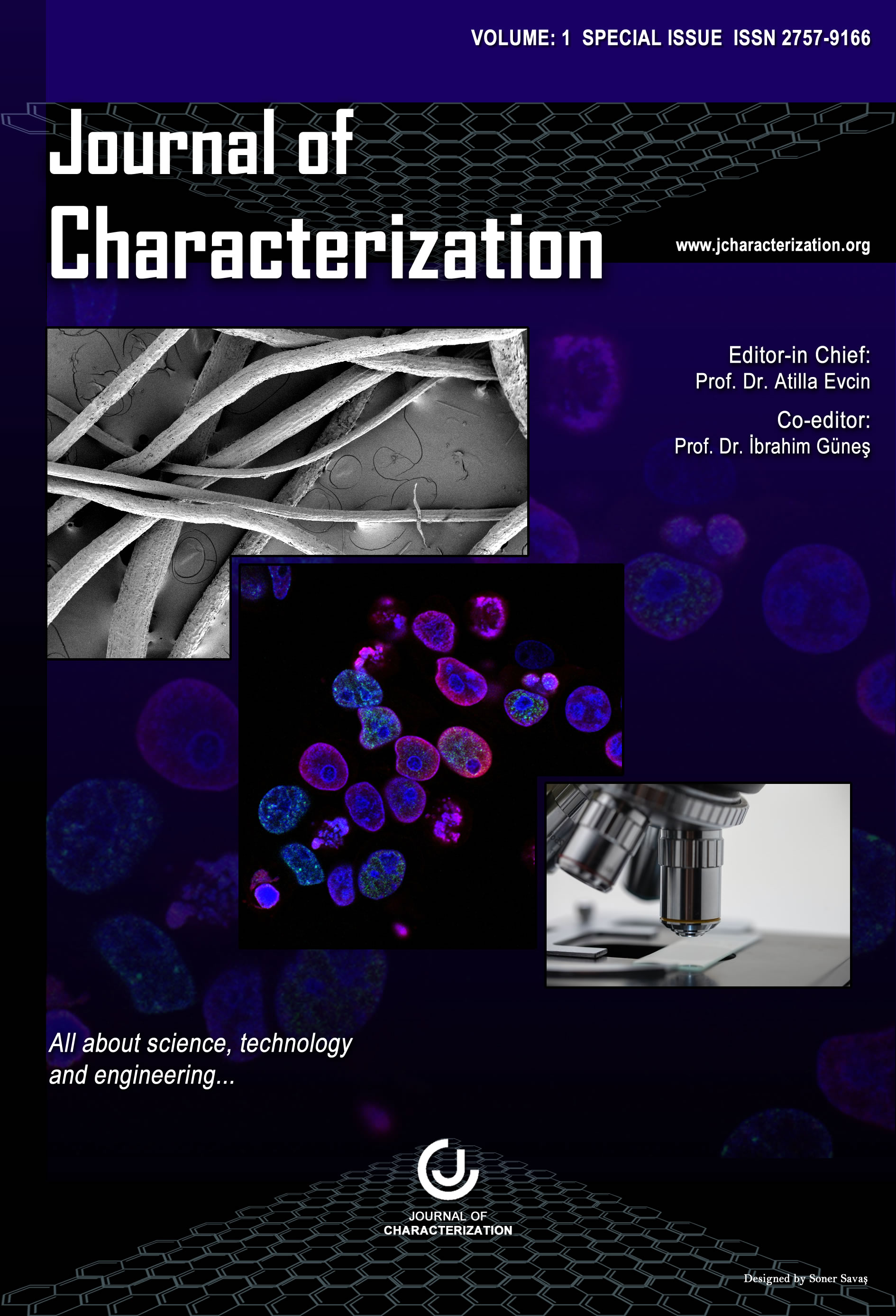Author :
Abstract
Yapılan çalışmada, Co-Mg alaşımına (%95 Co ve %5 Mg kompozisyon) borlama yöntemi ile kaplama yapılmıştır. Co ve Mg metal tozları faz diyagramındaki yüzdelik dilimlere göre kompozisyon karışım oranları belirlenmiştir. Belirlenen oranlarla kapalı kaplar içerisine konulan toz karışımlar 24 saat süre ile döner karıştırıcıda karışmıştır. Homojen karışım daha sonra geometrik şekle sahip olması için kalıplara dökülerek preslenmiştir. Preslenmiş numuneler kontrollü atmosferik fırın içerisine konularak 530 °C sıcaklıkta sinterlenmiştir. Bu işlem sonrasında numuneler borlama işlemi yapılması için silindirik olarak tasarlanmış kutular içerisinde alt ve üst taraflarına Ekabor II tozu dökülüp hava almaması için şamot çamuru ile kapatılarak 900 °C sıcaklık ve 1.5–4.5 saat değişen sürelerde borlama işlemi yapılmıştır. Borlanmış numunelere en son XRD ve SEM analizlerin yanı sıra mikrosertlik testleri yapılmıştır. XRD analiz sonucunda CoB, Co2B ve Co fazları ortaya çıkmıştır. SEM analiz sonrasında ise bor tabakaları oluşmuş ve tabaka kalınlık ölçümleri sonucunda en yüksek değer 4.5 saat süre sonrasında 120 µm olarak bulunmuştur. Mikrosertlik ölçümü sonrasında ise en yüksek değer 1930 HV0,05 olarak ölçülmüştür.
Keywords
Abstract
In the study, the Co-Mg alloy (95% Co and 5% Mg composition) was coated by boriding method. Composition mixing ratios were determined according to percentiles in the phase diagram of Co and Mg metal powders. Powder mixtures placed in closed containers at the determined rates were mixed in a rotary mixer for 24 hours. The homogeneous mixture was then poured into molds and pressed to form a geometric shape. Pressed samples were placed in a controlled atmospheric furnace and sintered at 530 °C. After this process, the pieces were borided at a temperature of 900 °C and for 1.5–4.5 hours by pouring Ekabor II powder on the top and bottom of the cylindrical designed boxes for boriding, and covered with chamotte mud to prevent air leakage. Performed the latest XRD and SEM analyses as well as microhardness tests were performed on the borided samples. As a result of XRD analysis, CoB, Co2B, and Co phases emerged. After SEM analysis, boron layers formed, and the highest value was found as 120 µm after 4.5 hours due to layer thickness measurements. After the microhardness measurement, the highest value measured was 19 30 HV0.05.
Keywords
- [1] F. Hongze, L. Zhou, S. Wang, et al. “Format%on and k%nds of bor%de on m%crostructureevolut%on and mechan%cal propert%es %n T%47.5Al2.0Cr2.0NbxB alloys”, Intermetall)cs, vol. 141, 107427, 2022.
- [2] I. Yıldız, I. Gunes, “Borlanmış % 5 Mg katkılı N%-Mg alaşımının yüzey özell%kler%n%n %ncelenmes%”, Pol)tekn)k Derg)s), vol. 23(1), pp. 97-104, 2020.
- [3] C. T. Sezg%n, F. Hayat, “The effects of bor%d%ng process on tr%bolog%cal propert%es andcorros%ve behav%or of a novel h%gh manganese steel”, Journal of Mater)als Process)ng[4] I. Yıldız, I. Gunes, “%3,0 Mg içeren Borlanmış Co-Mg Alaşımının YüzeyÖzelliklerinin İncelenmesi”, El-Cezerî Journal of Science and Engineering, vol: 6 (3), 533-542, 2019.
- [5] M.A. Doñu-Ruiz, N. López-Perrusquia, A. Renteria-Salcedo, et al., “Tribocorrosionbehavior of boride coating on CoCrMo alloy produced by thermochemical process in 0.35% NaCl solution”, Surface and Coatings Technology, vol. 425,127698, 2021.
- [6] D. Fernández-Valdés, O. Vasquez-De la Rosa, G.A. Rodríguez-Castro, A. et al., “Anumerical-experimental study of AISI 316L borided steels under cyclic contact loading”, Surface and Coatings Technology, vol. 423, 127556, 2021.
- [7] I. Gunes, I. Yıldız, “Investigation of Adhesion and Tribological Behavior of Borided AISI 310 Stainless Steel”, Revista Materia, vol. 21, pp. 61-71, 2016.
- [8] I. Gunes, A. G. Celik, “Surface Characterization of Borided S220 Rebar”, Journal of Characterization, vol. 1(2), 66-70, 2021.
- [9] X. Yang, C Li, Zhenhua Ye, X Zhang, et al., “Effects of tribo-film on wear resistanceof additive manufactured cobalt-based alloys during the sliding process”, Surface and Coatings Technology, vol. 427, 127784, 2021.
- [10] H. Arabnejad, H. Uddin, K. Panda, et al., “Testing and modeling of particle sizeeffect on erosion of steel and cobalt-based alloys”, Powder Technology, vol. 394, 1186- 1194, 2021.
- [11] R. Kamalakannan, K. DineshKumar and K. NarenRaj, “The sliding wear behaviorof CrCuFeNi alloyed with various combinations of cobalt”, Materials Today: Proceedings, In Press, 2021.
- [12] I. Gunes, I. Yıldız, “Rate of Growth of Boride Layers on Stainless Steels”, Oxidation Communication, vol. 38(4/A), 2189-2198, 2015.
- [13] Li Li, Peng Liu, Yongzhi Zhou, Huamei Duan, Mujun Long, Dengfu Chen,Mechanical properties and electronic structures of borides in Ni-Co-B alloy system, Materials Letters, vol. 309,131312, 2022.
- [14] C. T. Sezgin, F. Hayat, “The effects of boriding process on tribological propertiesand corrosive behavior of a novel high manganese steel”, Journal of Materials Processing[15] I. Campos-Silva, E. J. Hernández-Ramirez, A. Contreras-Hernández, et al. “Pulsed-DC powder-pack boriding: Growth kinetics of boride layers on an AISI 316 L stainlesssteel and Inconel 718 superalloy”, Surface and Coatings Technology, vol. 421, 127404, 2021.
- [16] J. M. Johnston, M. Jubinsky, S. A. Catledge, “Plasma boriding of a cobalt-chromiumalloy as an interlayer for nanostructured diamond growth”, Applied Surface Science, vol. 328, 133-139, 2015.
- [17] I. Campos-Silva, D., Bravo-Bárcenas, H., Cimenoglu, et al., “The boriding process inCoCrMo alloy: Fracture toughness in cobalt boride coatings”, Surface and Coating Technology, vol. 260, 362-368, 2014.
